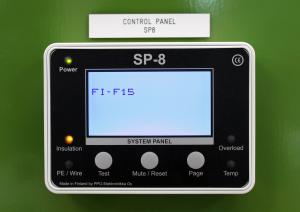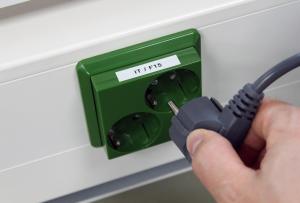Maximizing electrical safety in the operating room
With the latest technology, hospital staff can efficiently prevent potential serious hazards early before damage occurs.
HELSINKI, UUSIMAA, FINLAND, March 3, 2022 /EINPresswire.com/ -- An operating room is a challenging environment. Although technology has advanced tremendously and electronic medical devices meet all required standards, electrical problems are common in the operating room. Electrical safety is a crucial factor in this kind of critical premises. An electrical hazard can lead to injuries and even fatalities. Therefore, the best possible early warning system must be in place. In addition to that, the staff need to know how to use the equipment correctly and what to do if an electronic device breaks down.
A medical IT system with an insulation monitoring system protects people in the OR. The system isolates an operating room from the national power grid, and an attached insulation monitoring system monitors all the electrical devices connected behind this transformer. Thus, the system indicates the faults and problems before dangerous situations arise.
With the latest technology, hospital staff can efficiently prevent potential serious hazards early before damage occurs. The best possible safety level is obtained through good training and cooperation between OR and technical staff. That is essential for improving patient and staff safety.
Tips for designing a modern IT system
Switchboards are often designed so that they are too small to fit the equipment of advanced IT equipment. A safe IT system should include insulation fault localization, protective conductor continuity measurement and a fault detection screen in the operating room. In practice, this means that the insulation fault locator indicates the location of the faulty device. Protective conductor continuity measurement ensures that protective earth is used at each socket. It is essential to understand that these sockets are not earthed if the protective earth is disconnected. These sockets will then not have insulation monitoring.
The ideal situation would be to monitor at the socket level. The faulty device could then be quickly localized and replaced.
Local legislation may not require an IT system and insulation-level monitoring in these facilities, but it is seriously worth considering. Hospitals may have a simple residual-current device in use, which unfortunately reacts when the damage has already occurred and cuts the electricity of all devices connected to its fuse group. The good thing is that advanced systems became more common in the 2010s. Still, very few hospitals use the most advanced new generation solution. In practice, solutions are often designed based on an old electrical plan using old and familiar technology.
Information and training of healthcare staff
The personnel should be provided with guidelines on how the alarm system related to the insulation-level monitoring operates in the room. The guidelines must also be displayed on the wall of an operating room for everyone to see. The staff must be able to react and respond quickly when an IT system gives an alarm. A faulty device in use can cause a serious, even life-threatening, situation for the healthcare person and the patient. The IT system is the responsibility of the hospital's technical staff, but they are not always present immediately, so the OR staff must handle the situation quickly. There must always be someone in or near the OR who can act. That person might as well be a medical janitor.
Maximizing safety is the sum of many factors
Although technology, practices and safety measures have advanced, there is still a long way to go to achieve an adequate level of electrical safety in operating rooms worldwide. In the 2020s, many risk factors will continue to be identified globally. There is a lot of room for improvement in the following issues: equipment know-how, equipment condition, faulty cables, information flow, training, the operating environment, operating methods and the lack of reliable electrical safety monitoring.
Acquiring a modern IT system with insulation monitoring is a small investment compared to the security and benefits it brings; it is a sustainable solution with a long life cycle.
Proper guidance and investment in training are beneficial in the usability and efficiency of the new technology equipment. When the staff understand the operation of the equipment at a sufficient level, the best possible result is obtained. Regular training provides the necessary skills and knowledge and the ability to use electronic medical devices safely. Staff should know existing hazards with real examples.
When the electrical equipment in an operating room environment works properly, is easy to use, and integrates different solutions successfully, it increases well-being at work and efficiency.
CEO Timo Ohtonen
PPO-Elektroniikka Oy
+358 9 56609210
email us here
Electrical safety in the operating room
Legal Disclaimer:
EIN Presswire provides this news content "as is" without warranty of any kind. We do not accept any responsibility or liability for the accuracy, content, images, videos, licenses, completeness, legality, or reliability of the information contained in this article. If you have any complaints or copyright issues related to this article, kindly contact the author above.



